Art, for the Mundi Live Association, chaired by Margherita Chiara Immordino, is a journey, a trajectory of different artistic styles: figurative, abstract, conceptual. A metaphor for beauty, harmony, and balance. A journey that crosses geographical and cultural boundaries, fostering a universal dialogue that reverberates beyond national distinctions.
The art exhibition ‘Abstract Alphabet’, inaugurated by the Mundi Live Association at the Museo Bellini in Florence on 15 June 2024, perfectly embodies this transnational spirit of art, acting as a crossroads of artists from different backgrounds, each one a bearer of unique visions. rooted in their cultures of origin, but placed in an international dimension.
The exhibition was inaugurated by the internationally renowned artist Alfred Mirashi Milot, together with the president of Mundi Live, Margherita Chiara Immordino Tedesco, the president of the AAIE center’s gallery, Yaning Zhu, Giuseppe Bertolino president of Picta and Samya (Ilaria Didonato), patroness of the event. A significant number of artists from different countries – Italy, Albania, China, the United States and Spain – took part in the event, exhibiting their works of art. We mention a few of them: Zheng Jieyu, Huang Zhe, Ana Ortín Maestre, Gabriel Lass, Graziella Giunchedi, Lluí Carbó, Luciano Navacchia, Monica Melani, Emanuele Fortunati, Matteo Ferretti, Angelo Tasini, Marta Bontempi.
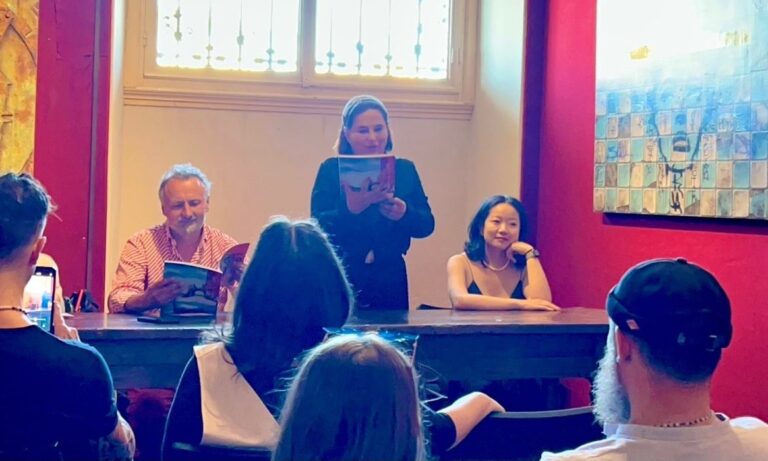
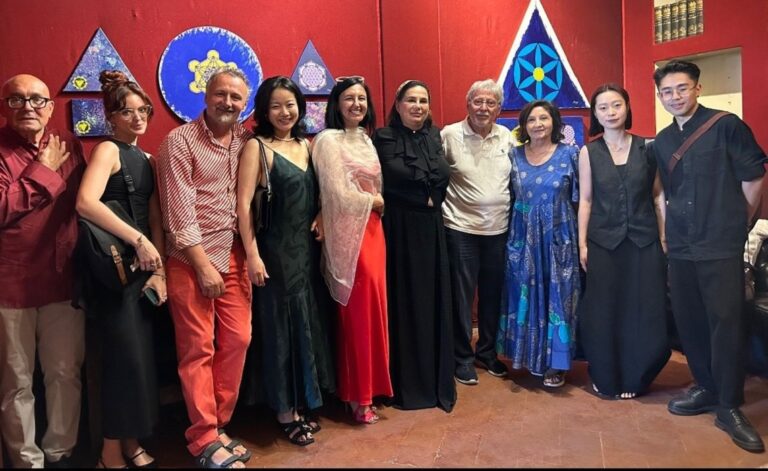
Alfred Mirashi, an Italo-Albanian artist, aka Milot, born on 29 August 1969 in Milot, northern Albania, in the district of Kurbin, perfectly represents this spirit of an art that transcends borders, that is inclusive, against closures, with deep local and national roots, but at the same time projected out into the world.
Milot’s own personal history is rich in historical suggestions and geopolitical connections. His passion for art and the impossibility of undertaking studies in a rigid and oppressive system, economically and culturally poor, as Albania was in those years, drove Milot to leave Durres in 1991, as a refugee, on board a ship with over 5000 people, bound for Italy. From Brindisi, where he disembarked, he then moved to Naples and then to Cervinara, a small town in the province of Avellino, then to Florence (where he now lives) and to Milan, where he studied at the Brera Academy. A life and artistic journey that led Milot to obtain Italian citizenship and become a world-renowned artist. He studied in England on an Erasmus scholarship and lived in New York for a few years before returning to Italy, where with a major exhibition at the Maschio Angioino in Naples, he began his consecration as an internationally renowned artist. Milot has participated in numerous Contemporary Art Biennales around the world, including in China, where he was also director of the DODO Art Museum in Beijing and a professor.
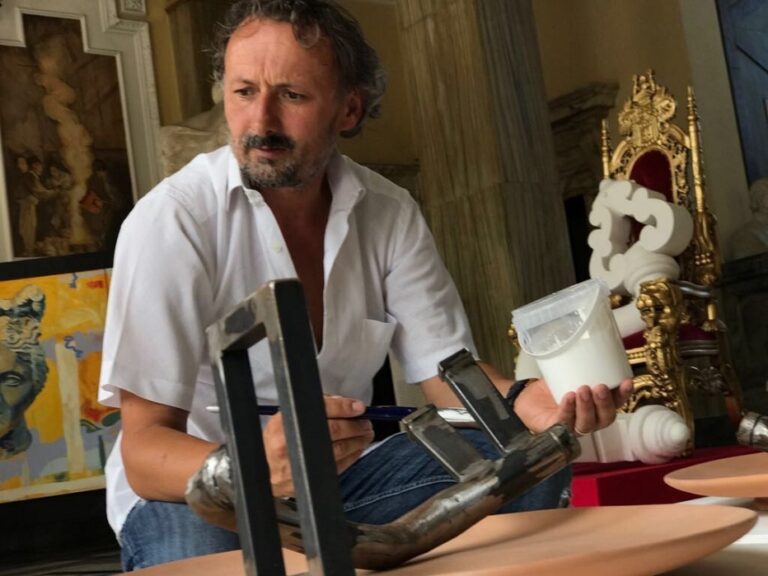
However, Milot has never forgotten his origins. His connection with Albania remains strong, as evidenced by his stage name ‘Milot’, which is the name of the town where he was born, a small rural village of about 10,000 inhabitants. His art is rich in references to Albanian culture and the Mediterranean and classical heritage. For instance, the harmony and vivid colors of his abstract painting have a deep connection to the bright colors of folkloric dresses, such as wedding dresses, of the centuries-old Albanian tradition.
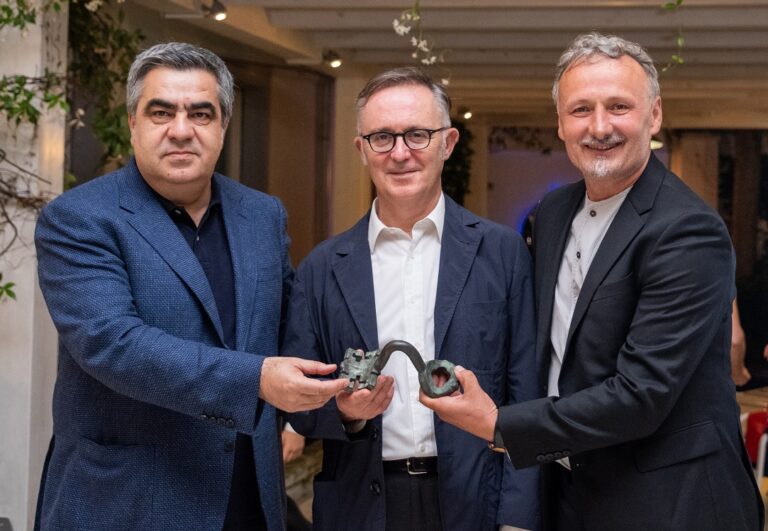
Milot’s artistic research moves across different languages ranging from painting to sculpture and large-scale installations, combining different cultural influences in a perfect balance.
Milot is the artist with the largest number of outdoor super-sculptures in Europe. One of the hallmarks of his work is the key, a distorted key. His monumental sculptures of crooked keys have been exhibited in recent years in large squares in various cities around the world, including Cervinara, as a sign of Milot’s gratitude to the town that generously welcomed him when he arrived in Italy as a migrant.
Milot’s crooked keys refers to the closedness and hardships in society. Milot aspires to a society without closures, open to new ideas and different cultures. A society, therefore, without keys, or rather with keys that serve only to open our hearts to knowledge and diversity, and not to close them. A distorted, bent key is unusable, and therefore can no longer be a means of locking, so it is meant to be the abstract form of a world without doors in communication and exchange, where peace and tolerance prevail.
Huge and deliberately distorted, Milot’s keys symbolizes the hope of no more closed places. It is a tool for finding the right path, overcoming fears, prejudices, uncertainties, doubts.
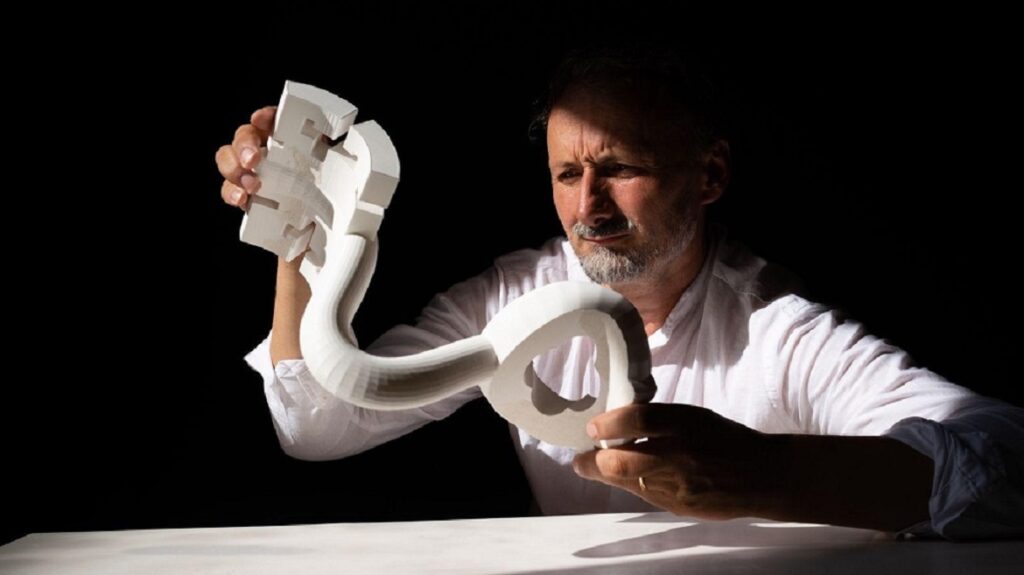
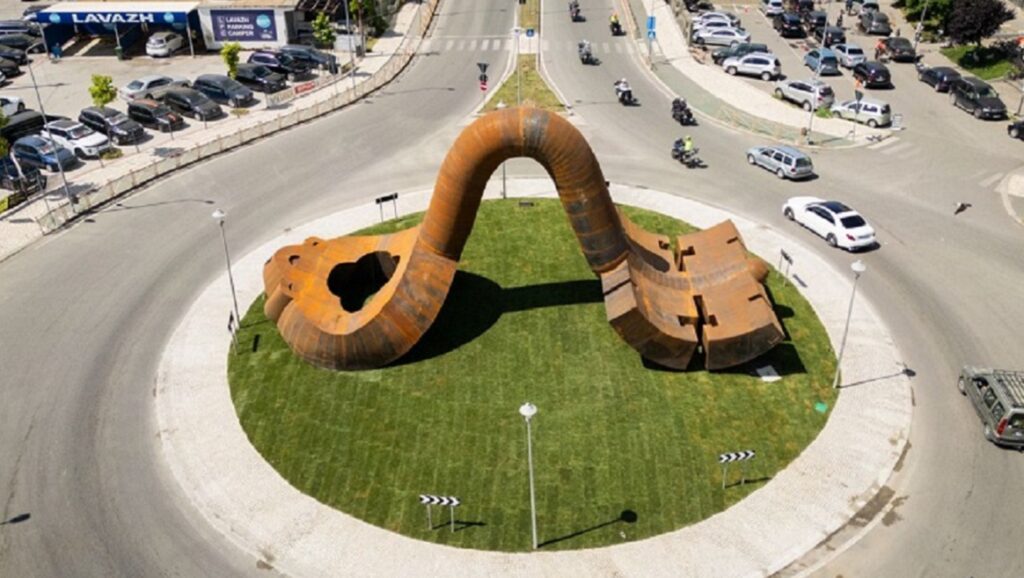
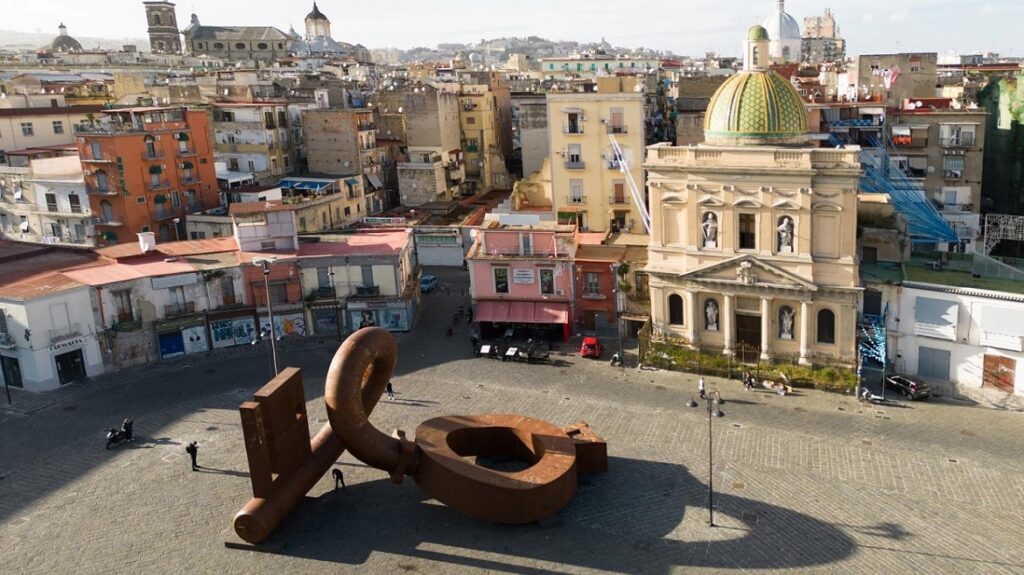
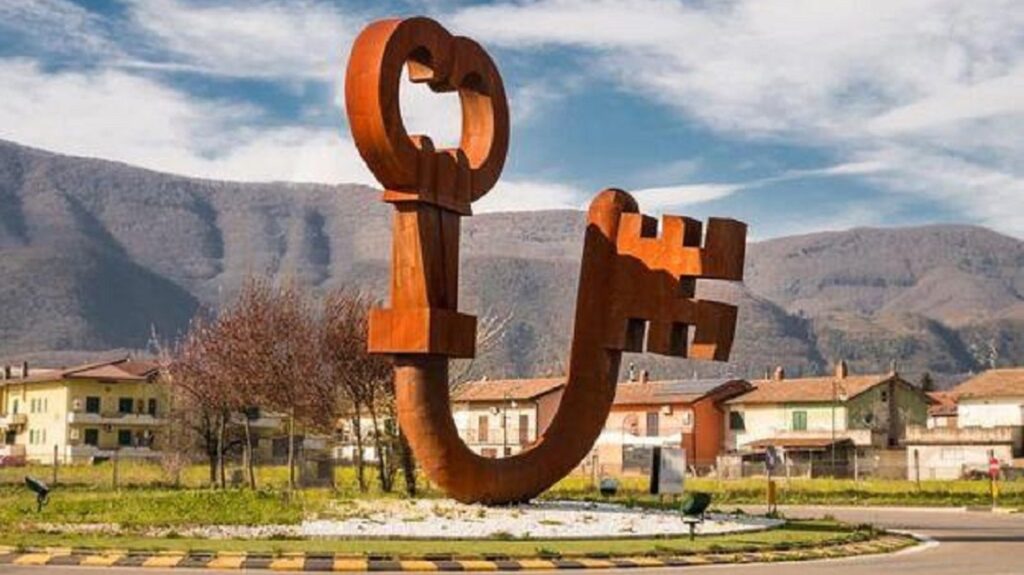
Milot’s work aims to promote dialogue between cultures, awaken consciences and combat prejudice and discrimination. Quoting the Italian historian and art critic Massimo Guastella, “with his Keys, Milot wants to convey messages of social convergence and ethics against the marginalization of women and men, the exploitation and degradation of nature…… In short, Milot longs for the betterment of the individual, in the extended and boundless relationships that the keys encourage them to establish. The key, curved and at first realistically conceived, then tending towards surrealism and expressionism, represents the useless configuration of contemporary society, which must globally and without exclusion resolve and impose itself for new humanitarian values, making useful, that is, straightening and returning to its usual conformation and effectiveness, the keys and thus individual and collective behavior: this is the only way to connect with each other on the planet, but also to create connections and respect between human beings, animal nature and the environment in which we live”.
With his artwork ‘The Albanian Key”, Milot was one of the 7 winners of an international competition (in which 130 artists from all over the world participated) held by the Albanian Ministry of Culture for the project ‘Art in Public Spaces’, which will be implemented during 2024. Milot’s Albanian Key, realized thanks to the support of the Albanian government, is an impressive monumental sculpture placed at the entrance to the city of Shkodra, considered the cradle of Albanian culture and a commendable example of centuries of peaceful interreligious coexistence. The ”Albanian Key’ is meant to symbolize the spirituality that Shkodra represents as the ‘cradle of culture’, a place of welcome and tolerance, a center of intersection of different roads, cultures and religions, and a witness of historical events with worldwide repercussions.
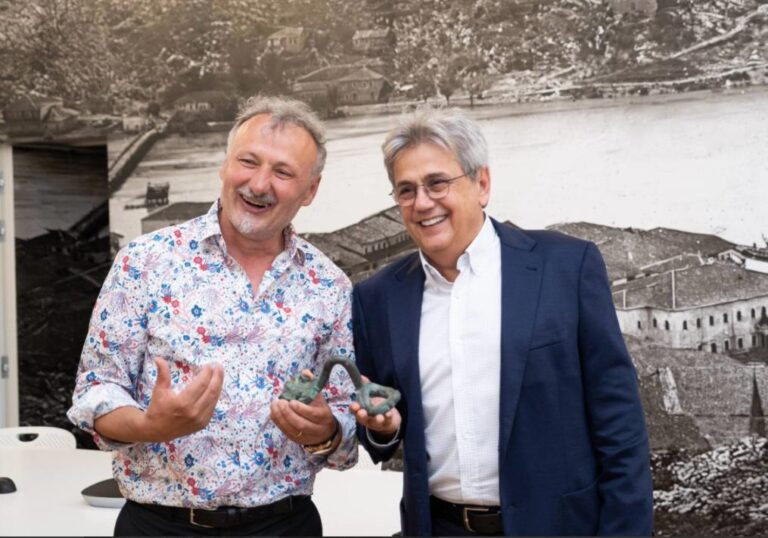
Placed in the urban crossroads of Shkodra, Milot’s monumental sculpture stands, according to Massimo Guastella, “like a bridge of passage between confluences, hybridisations, encounters; like an elevated structure linking one pole and one condition to another, as a translation of a profound universal message, overcoming linguistic and geographical as well as religious and ideological barriers, aimed at inspiring such change in the macro-dimension of globality and in the micro-realities of territories.”
Milot’s gigantic key metal sculptures are a message of hope in the midst of severe global geopolitical turbulence, the rise of regional armed conflicts and rivalries between major powers, the emergence of new protectionism, and the growth of religious and ethnic intolerance. But they are also an invitation for each person, for families, for local communities, to reject closure and to open up to others in our daily lives.
In the frame of the Key United Project, supported by Jean Wolf, Los Angeles, United States, and Associazione Mille Volti, Italy, other sculptures of Milot will be placed in the coming months in the USA, Europe, Australia and China.
Images Credit: Michele Stanzione, Art Photographer







